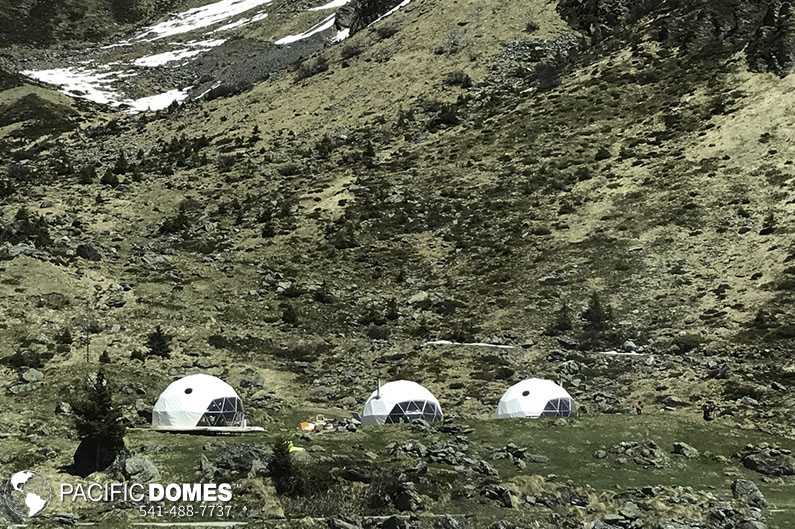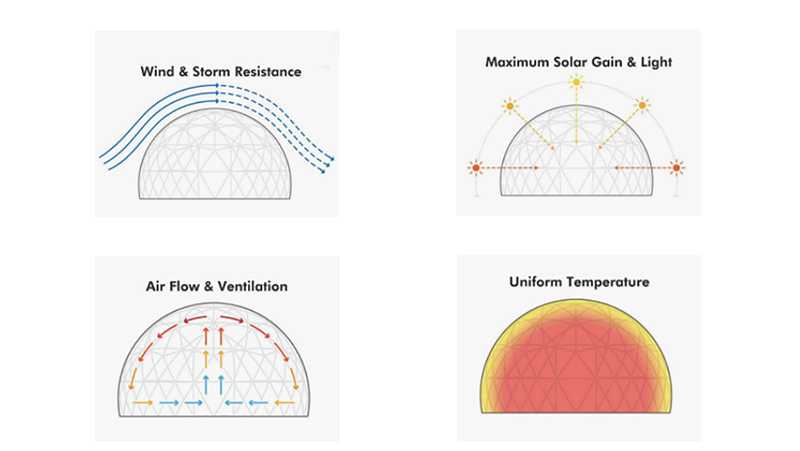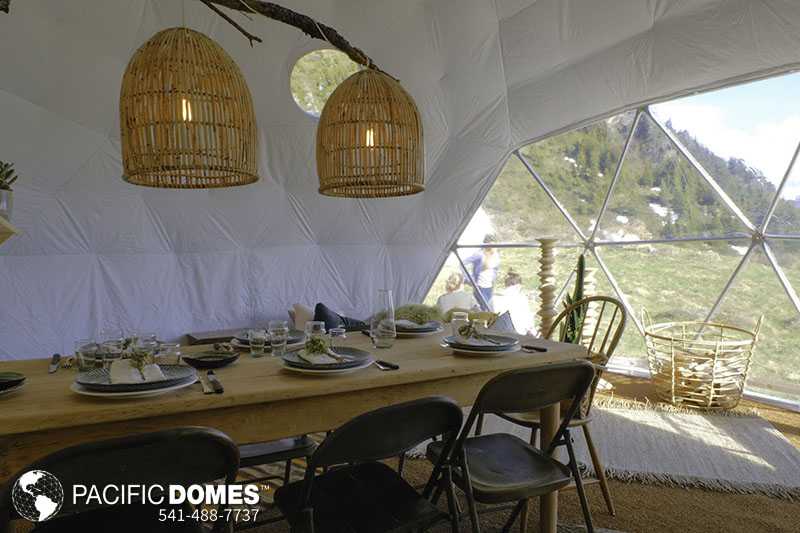“Due to its aerodynamic structure, the geodesic dome is built to withstand Nature’s extremes.” — Pacific Domes, Inc.
Why and when should you consider using geodesic dome architecture vs. conventional building methods? For starters, did you know that geodesic domes are virtually disaster-proof, proving time and again to withstand major earthquakes and hurricanes? So, does it make sense to erect domes in areas subjected to Nature’s extremes?

Beginning with the basic frame structure, geodesic domes are known to be 5-times stronger than a rectangular house. As per the Buckminster Fuller Institute, geodesic domes are the strongest, lightest and most efficient structure yet, known to man. The larger the dome size gets, the stronger it gets – all, without having to dig a deeper, wider foundation to support its frame!
Specifically, a geodesic dome is efficient for the following reasons:
- Its decreased surface area requires less materials and reduces construction costs.
- Exposure to cold in winter and heat in summer is decreased, due to less surface area per unit of volume.
- The concave interior creates a natural airflow allowing hot or cool air to flow evenly throughout the dome with the help of return air ducts.
- Extreme wind turbulence is lessened because winds contributing to heat loss flow evenly around the dome.
- It acts like a giant downward reflector that concentrates interior heat, preventing radiant heat loss.
- Dome studies, comparing same-size traditional homes, have shown a 30% energy savings.

Buckminster ‘Bucky’ Fuller, father of the modern geodesic dome, received many awards throughout his lifelong career – and, the American Institute of Architects awarded him the Gold Medal in 1970 for inventing the strongest structure known to man. But wait, there’s more…
Domes Are Energy-Efficient Shelters, Too!
Geodesic dome shelters have been built all around the world in all types of climates. A dome’s structure is one of the most energy-efficient interior spaces because air and energy circulate without obstruction. This enables heating and cooling to occur, naturally – proving domes to be the most energy-efficient human shelter one can find.

Concepts Behind Geodesic Dome Architecture
- ‘Bucky’ Fuller demonstrated the difference in strength between a rectangle and a triangle by applying pressure to both structures – the triangle proved to be twice as strong and remained rigid while the unstable rectangle collapsed.
- Fuller, also discovered that a sphere created from triangles, had unparalleled strength. This led to the “doing more with less” principle – and, the invention of the geodesic dome.
- Fuller reintroduced the idea that when the dome’s diameter is doubled it will quadruple its square footage and produce eight-times its volume. A dome encloses the largest volume of interior space with the least amount of surface area – thus, saving on materials and cost.
Geodesic Domes for a Sustainable Ecoliving Future
As ecoliving shelters, domes have gained world-wide popularity in non-traditional housing markets, such as, eco-tourism, glamping and relief efforts. Domes solve many ecological and economic challenges that traditional building methods and materials don’t address.
Due to their portability, economical building costs and sustainability, they have had a huge impact in other markets, as well. Domes are suited to all types of terrains; are fully deployable and can be erected in hours with simple hand ratcheting tools. Because they are considered temporary shelters, in that they can be taken down when no longer needed, this often simplifies or bypasses building permits.

The spacious dome interior design offers unlimited possibilities for creativity. Its circular design encloses the greatest volume of interior space with the least amount of surface area.
For additional information, Pacific Domes invites you to visit our Knowledge Base. Explore our list of videos, flipbooks, brochures and How to Guides.
